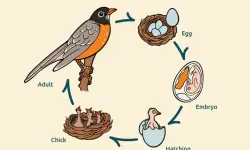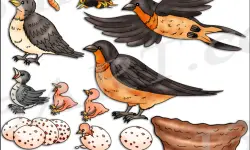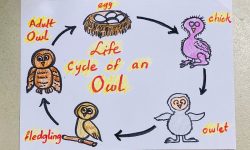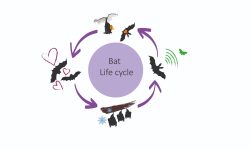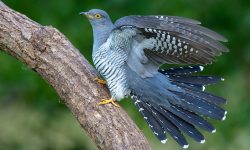The genus Alauda is a small but remarkable group within the lark family (Alaudidae). Known for their melodic songs and open-habitat preferences, these birds are iconic symbols of grasslands and agricultural regions. While once thought to include more species, modern taxonomy recognizes only three distinct species within the genus Alauda: the Eurasian Skylark (Alauda arvensis), the Oriental Skylark (Alauda gulgula), and the Raso Lark (Alauda razae). Each of these birds occupies a unique ecological niche, with differences in appearance, vocal behavior, and adaptive strategies.
Quick Facts: The Genus Alauda
Species |
Common Name |
Region |
Conservation Status |
|---|---|---|---|
Alauda arvensis |
Eurasian Skylark |
Europe, Asia, introduced areas |
Least Concern (LC) |
Alauda gulgula |
Oriental Skylark |
South and Southeast Asia |
Least Concern (LC) |
Alauda razae |
Raso Lark |
Raso Island (Cape Verde) |
Critically Endangered (CR) |
The 3 Species of Genus Alauda
Alauda arvensis – Eurasian Skylark
Appearance
Eurasian Skylarks are medium-sized (16–18 cm), with brown-streaked upperparts and a pale buff-white belly. Their short, erectile crest can be raised when alert. The plumage provides excellent camouflage in dry grasslands and farmlands, helping them avoid predators while nesting on the ground.
Vocalization
This species is renowned for its long, aerial song-flights. Males rise high into the sky, hovering while delivering a continuous, trilling song that can last up to 15 minutes. The complex melody, rich in warbles and whistles, functions both to attract mates and mark territory, making it one of the most elaborate avian vocal displays.
Habitat and Adaptation
Widespread across Europe and Asia, the Skylark inhabits open grasslands, meadows, and cultivated fields. It has adapted well to agricultural landscapes, though modern farming practices pose threats. Populations in colder regions migrate southward in winter, while others remain resident depending on local climate.
Social Behavior
During breeding season, Skylarks are territorial and solitary. In winter, they form loose flocks, often foraging together in open fields. Ground-dwelling by nature, they prefer running to flying when disturbed and nest in shallow ground scrapes hidden among vegetation.
Alauda gulgula – Oriental Skylark
Appearance
Slightly smaller than the Eurasian Skylark, the Oriental Skylark measures 15–16 cm in length. It has finer streaks on the upperparts, a shorter and less prominent crest, and often appears darker or warmer in tone. Plumage may vary subtly across its wide geographic range.
Vocalization
The Oriental Skylark delivers a pleasant, warbling song, usually from low vegetation or brief hovering flights. While its song is musical and steady, it is less complex and sustained than that of A. arvensis, lacking the dramatic song-flights of its western counterpart.
Habitat and Adaptation
Widespread across South and Southeast Asia—from Iran through India, southern China, to Indonesia—this species favors dry grasslands, fallow fields, and lightly cultivated land. Adapted to warm climates, it nests on the ground and tolerates heat and aridity well.
Social Behavior
Typically seen alone or in small loose groups, especially outside the breeding season. Less sociable than the Eurasian Skylark, it maintains a largely solitary lifestyle and shows minimal flocking behavior even in winter.
Alauda razae – Raso Lark
Appearance
Endemic to Raso Island in Cape Verde, the Raso Lark is the smallest of the three species, measuring 14–15 cm. It has pale brown plumage with faint barring, a relatively long, slightly decurved bill, and subtle sexual dimorphism—males being slightly larger.
Vocalization
Its song is simple and repetitive, made up of short, soft notes delivered from rocks or low shrubs. Unlike the Eurasian or Oriental Skylark, the Raso Lark does not perform aerial song-flights, reflecting its limited territory and energy conservation needs.
Habitat and Adaptation
Restricted to a dry, sparsely vegetated island, the Raso Lark is well-adapted to arid conditions, poor soils, and seasonal food scarcity. Ground-nesting among rocks and shrubs, it survives in one of the harshest environments among skylarks. Its population is critically endangered due to its narrow range and ecological vulnerability.
Social Behavior
Despite its isolated range, the Raso Lark shows notable social tendencies. It may forage in loose groups and display cooperative behaviors such as shared alerting or overlapping territories. Some breeding pairs stay bonded beyond a single season, an uncommon trait in its genus.
Comparative Analysis of the Three Alauda Species
Appearance Comparison
Species |
Size |
Crest |
Plumage |
Bill |
A. arvensis |
16–18 cm |
Short, raised |
Heavily streaked brown |
Medium |
A. gulgula |
15–16 cm |
Short, lower |
Finer streaks, darker |
Shorter |
A. razae |
14–15 cm |
No crest |
Pale brown, subtle bars |
Longer |
Vocal Behavior Comparison
The Eurasian Skylark (Alauda arvensis) is distinguished by its elaborate and prolonged aerial song-flights, with males singing continuously for up to 15 minutes while hovering high in the sky. This display combines vocal complexity with visual signaling.
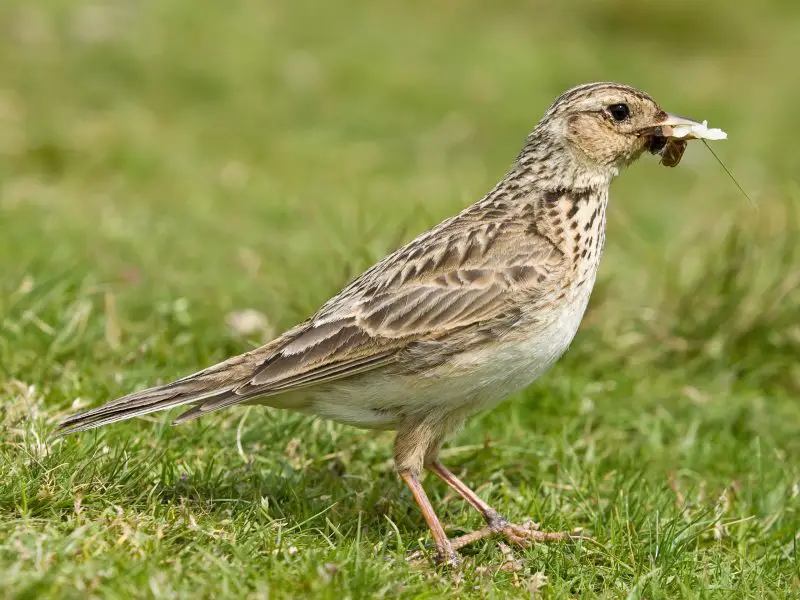
The Oriental Skylark (Alauda gulgula) produces shorter, warbling songs, typically delivered from the ground or low perches. While musical, its vocalizations lack the complexity and sustained flight component seen in A. arvensis.
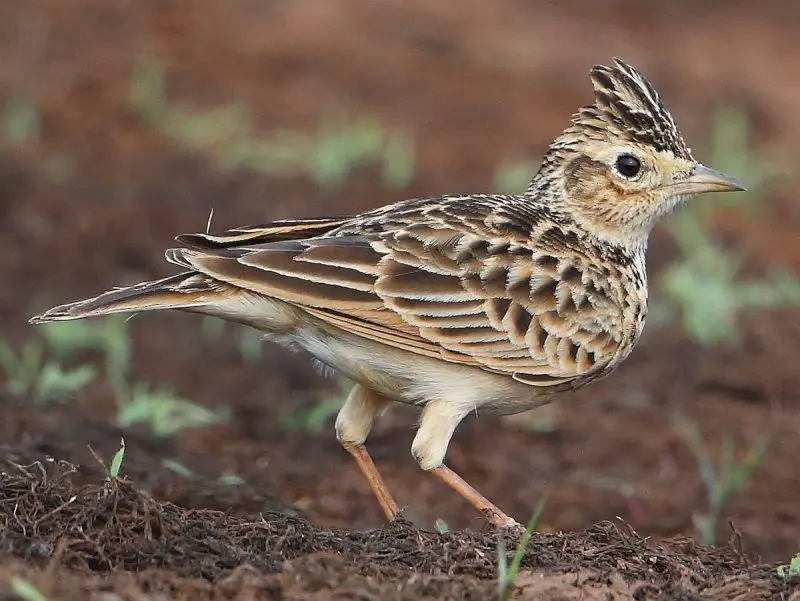
The Raso Lark (Alauda razae), in contrast, offers a simple, repetitive series of notes, sung from rocks or shrubs. It does not perform aerial displays, likely due to energy constraints and limited space on its small, arid island habitat.

Habitat and Distribution
A. arvensis inhabits temperate open landscapes across Europe and temperate Asia, including meadows, pastures, and cultivated fields. It has shown resilience in modified agricultural environments.
A. gulgula is distributed widely across tropical and subtropical regions of South and Southeast Asia. It prefers dry grasslands, scrub, and light agricultural zones, with high tolerance for disturbed habitats.
A. razae is restricted to the 7-square-kilometer Raso Island in the Cape Verde archipelago. It occupies arid scrubland with sparse vegetation and limited resources, making it highly vulnerable to environmental fluctuations.
Behavioral Plasticity and Social Structure
A. arvensis exhibits high behavioral plasticity. It is territorial during breeding but becomes communal in winter, forming flocks to forage and migrate. It adapts well to a range of open landscapes.
A. gulgula is more solitary year-round, showing less flocking behavior. However, it remains flexible in habitat use and tolerates disturbed or semi-cultivated areas, which has supported its wide range.
A. razae shows unexpected social tendencies for such an isolated species. It may form loose colonies and exhibit cooperative behaviors, especially under harsh resource-limited conditions. Some pair bonds may persist across breeding seasons, an unusual trait among larks.
Comparison with Other Lark Genera
Although the genus Alauda contains only three extant species, it holds a distinctive place among larks. Other genera such as Galerida (e.g., Crested Lark) and Eremophila (e.g., Horned Lark) also inhabit open landscapes and exhibit ground-nesting behavior, but they differ markedly in vocalization, distribution, and morphology.
Species in Galerida often sing from the ground or low perches, with shorter, less continuous songs. Eremophila species, adapted to colder and more arid environments, feature unique plumage traits like facial “horns” but generally lack the aerial song-flights typical of Alauda arvensis.
What sets Alauda apart—particularly A. arvensis—is the extended aerial song display, a hallmark of the genus, along with a deep cultural presence in literature, music, and rural symbolism across Europe and Asia. This blend of elaborate vocal behavior and symbolic resonance distinguishes Alauda from its lark relatives.
Conservation Status and Threats
The conservation outlook for Alauda species varies significantly across the genus.
Alauda arvensis is listed as Least Concern globally but has experienced sharp regional declines, particularly in Western Europe. These declines are driven by intensive agriculture, pesticide use, and the loss of traditional grassland habitats.
Alauda gulgula maintains a stable global population across its wide Asian range. However, localized declines occur where natural grasslands are converted to urban or industrial use. Despite this, its adaptability to disturbed environments has buffered broader population loss.
Alauda razae, by contrast, is Critically Endangered, with fewer than 250 mature individuals surviving exclusively on Raso Island. Its limited range, vulnerability to climate events (such as droughts), risk of invasive species introduction, and low genetic diversity make it one of the world’s most at-risk passerines.
Conservation measures for A. razae include strict island access control, regular monitoring, and biosecurity to prevent the introduction of predators like rats or cats. Long-term strategies aim to identify potential translocation sites and build genetic resilience.
Why It Matters
Despite comprising just three species, the genus Alauda offers rich examples of evolutionary adaptation, ecological importance, and cultural resonance. From the boundless flight-songs of the Eurasian Skylark to the quiet persistence of the Raso Lark, these birds highlight the need to understand and preserve even the smallest branches on the tree of life.
Conclusion
The genus Alauda may include only three recognized species, but it represents a striking diversity in form, behavior, and resilience. Whether it’s the widespread A. arvensis gracing European skies, the adaptable A. gulgula thriving in Asian fields, or the endangered A. razae clinging to survival on a remote island, each species tells a unique evolutionary story. By studying and conserving them, we gain insight not only into the lives of larks, but into the ecosystems they call home—and into our own role in protecting the natural world.Despite comprising just three species, the genus Alauda offers rich examples of evolutionary adaptation, ecological importance, and cultural resonance. From the boundless flight-songs of the Eurasian Skylark to the quiet persistence of the Raso Lark, these birds highlight the need to understand and preserve even the smallest branches on the tree of life.

